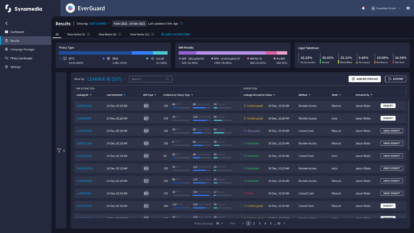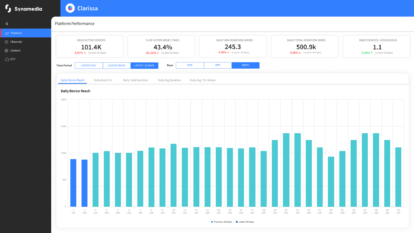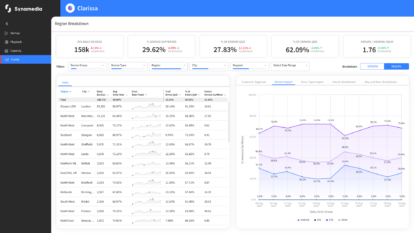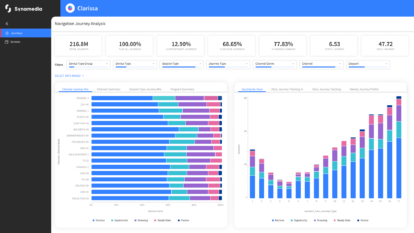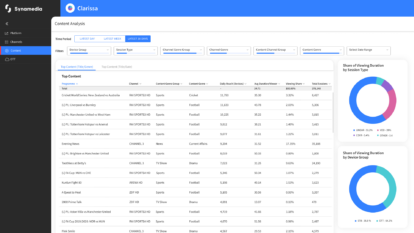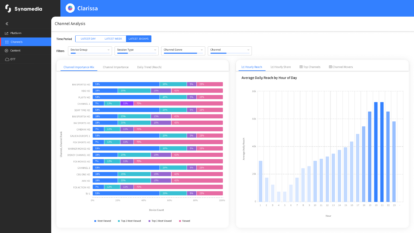What OTT D2C players can learn from Prime Video’s English football kickoff
Against a backdrop of pervasive on-demand convenience and direct-to-consumer (D2C) TV, live sports may be the last stronghold of appointment viewing. (Has anyone ever said “don’t spoil the final for me, I recorded the whole season to binge-watch later”?)
That’s why giants like Amazon are bidding big to build up a live sports portfolio for Prime Video, their OTT direct-to-consumer TV service, including:
- $120m for 20 English Premier League (EPL) soccer matches in December 2019
- $130m for two seasons of Thursday night NFL
- $40m for the US Open over five years
- $50m for five years of the Men’s ATP World Tour Tennis and Women’s WTA tournaments.
For OTT direct-to-consumer (D2C) TV service providers weighing up the live sports opportunity, there’s a lot to learn from Amazon’s EPL debut (both good and well, less good).
The first 10 matches were live-streamed between the 3rd and 5th of December last year. While the reaction was mixed, the midweek debut also marked the biggest day ever for Amazon Prime sign-ups in the UK—before the record was immediately broken the following day.
Next came the popular Boxing Day fixtures, airing 9 matches on December 26 and the last EPL match of 2019 the following day.
Teething problems aside, there are some key takeaways every OTT D2C video provider looking at live sports should consider—around the customer experience, the wider strategy, and the potential risks.
Let’s dive in.
Why is UX a D2C TV differentiator?
Among all the written reviews, shared tweets and office conversations regarding the first day of EPL matches streaming on Prime Video, the most favorable comments all mentioned the innovative user experience (UX). The same was true on Boxing Day, as families gathered to feast on bigger matches across 10 hours.
Amazon didn’t just offer football fans a reskinned version of the interface used in their tennis and american football streams—this was different. There were clear upgrades in the EPL experience, designed to attract football fans.
Some of these actively enriched the viewing experience for hardcore fans—like the X-Ray feature that delivered a stream of on-demand analytics and insights, including advanced live match stats from Opta, info of the line-ups of each club, and key highlights as they happened.
On Boxing Day, a separate stream named “Every Game, Every Goal” proved especially useful, essentially presented as a highlights show in real time that users put on to keep up with key moments from every other match while watching one.
Other features were simply small aesthetic touches—fans could view from different camera angles or switch off the commentary audio for a more immersive stadium-noise only experience.
These features didn’t necessarily break new ground by themselves—other OTT providers today (like DAZN) offer similar functionality and Pay-TV operators offered multi-camera viewing, instant replay on-demand and real-time match statistics as early as the mid-90s.
But taken holistically, Amazon brought a compelling vision of what future live sports platforms might look like to market. They set a benchmark other D2C video service providers will be measured against for some time—and not just in terms of UX features.
As we’ll go on to see, Amazon also changed the game for advertisers—offering them advanced performance metrics around increased searches, views and sales of relevant products on its retail site.
A strategy beyond UX
Live sports video platforms live or die by the quality of viewing experience they deliver.
But it would be a mistake not to focus on the wider aspects of Amazons PL debut—particularly for smaller OTT D2C service providers looking to make their own sports portfolio work as hard as possible for them.
For a start, Amazon’s pick of 20 fixtures for 2019 is super interesting. Rather than spread them throughout the season, they chose to stream them all in December.
That made Prime’s free 30-day trial irresistible—all 20 games effectively for free in a month where Prime’s next-day delivery would prove enormously useful. It’s no wonder they broke their single day sign-up record.
That ten of the games fell on Boxing Day was another smart move. As families gathered in living rooms for the holidays, Amazon had an international captive audience many times their subscriber base (particularly given most other leagues shut down during the holiday period).
And that captive audience also represented a compelling segment for advertisers. Amazon offered 13 minutes of ad space per fixture, lower than 20 minutes with most PayTV, sold at a higher price.
They were also able to offer advertisers something traditional broadcast never could: direct insight into ad effectiveness through searches and sales linked to Prime subscriber accounts—irresistible to marketers measuring effectiveness through things like attribution modelling.
Amazon also used ad space to push their own content and services—viewers for the Manchester City vs. Burnley game on December 3 were directed to the Prime Video documentary “All or Nothing: Manchester City”.
The OTT direct-to-consumer play is interesting here: advertisers might be competing over smaller scraps of time, but increased data richness means service providers can connect brands with tighter segments, and—in Amazon’s case—support closer measurement through an integration with their ecommerce metrics.
It’s a multi-faceted strategy we’ve barely touched the sides of: good timing, a captive audience, a compelling cross-sell opportunity masquerading as a promotion, a new advertising model and more.
However, even for smaller OTT D2C video providers, the message is clear: making the most of the live sports opportunity is about much more than the viewing experience.
Having said that…
Teething problems
On Amazon’s first night of EPL coverage, the enthusiasm around the cool new in-game features prevailed despite user mentions of latency and buffering issues.
(In one case, the on-screen analytics fell so out of sync with the stream that viewers were alerted to a player being sent off before they saw it happen—where OTT usually lags behind radio and social media commentary, here it all happened within the same service.)
Viewers took to Twitter to report issues around latency, buffering and poor picture quality throughout the month, and a few reviews from the media claimed the picture was a full minute behind broadcast at times.
A reliably high quality viewing experience is the biggest thing keeping OTT services from besting traditional broadcasting. Split-screen, multi-device, on-screen analytics, social media integration—all of it is secondary to the fundamentals of excellent picture quality and ultra-low latency.
And it’s no wonder there were hiccups—the journey from the stadium camera lens to a TV screen is still extremely complex.
To succeed, OTT streaming services need to match the same quality of service that broadcast does. Amazon won’t get many more chances, and this is an area where Pay TV excels.
More choice, less loyalty
Amazon aren’t the only tech giant dipping their toe into live sports—Facebook notably streamed coverage of Spain’s La Liga in India and the Champions League in Latin America.
Others will surely follow. And as the competition between service providers heats up, appealing to viewer convenience is going to be essential to long term success.
Because if Amazon’s 20 game experiment indicates a fragmented future with fixtures dispersed between the highest bidding operators, it’s bad news for fans who’ve grown used to simply switching between a couple of Pay-TV providers for access to the whole season.
It doesn’t matter how great the experience looks and sounds—if there’s not a well-priced, convenient option for audiences, the bottom could quickly fall out from the OTT D2C opportunity as fans turn to illegal streams instead.
And there are plenty of illegal options out there. As the last stronghold of appointment viewing, live sports can be incredibly lucrative for pirates—running services funded by ads, malware or even cut-rate subscriptions.
The next few years could be as turbulent as they are innovative for live sports in the OTT D2C video world.
Service providers need to think strategically about how they aggregate new audiences—and that’s not just about quality. It’s also about packaging products in a convenient and commercially attractive bundle.
Let the games begin
Amazon’s venture into top-flight football was a mixed success: fans reacted positively to a new standard of picture quality and an improved viewing experience—but only for as long as the latency allowed.
Nevertheless, Prime Video has paved the way as the first major OTT direct-to-consumer disruptor for the global soccer market. Every OTT contender should be learning as much as they can from these early steps to inform their own strategy and approach.
It’s still all to play for; the first service provider to deliver a live sports experience that lives up to broadcast quality while also stunning users with incredible functionality (and connecting advertisers with ultra-targeted segments) is going to change the way the world watches sports forever.
Further Reading
Learn how to “Deliver A Live OTT Video Service that Matches Broadcast” with our in-depth guide.
About the Author
Adrian Wohlfarth is Senior Content Marketing Manager at Synamedia. Having graduated with an engineering background, Adrian has since gained over 17 years’ experience marketing video technology for both traditional service providers and, more recently, the direct-to-consumer segment. When he is not busy planning content strategy and turning complex concepts into compelling messaging, Adrian spends his free hours mountain biking and volunteering.
